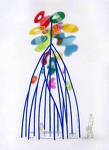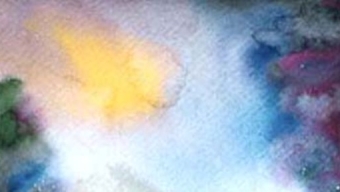What Can You Tell me About the Twelve Senses?
Ask Kytka Archives: December 18, 1998
I can tell you that one of the most important contributions made by Rudolf Steiner was his description of the existence of twelve senses. Learning about the twelve senses opens up your view and level of understanding, especially when working with children… I cannot begin to go into the depth – and would highly recommend a much deeper look into the resources I have listed below. To give you a small taste, I give you Rudolf Steiner’s list of the twelve senses of man….
{+++}
“The I sense: Again I ask you to remember what has been said about this sense of the I . The sense of I does not refer to our capacity to be aware of our own I . This sense is not for perceiving our own I , that I which we first received on Earth; it is for perceiving the I of other men. What this sense perceives is everything that is contained in our encounters with another I in the physical world.

Second, comes the sense of thought: Similarly, the sense of thought has nothing to do with the formation of our own thoughts. Something entirely different is involved when we ourselves are thinking; this thinking is not an activity of our sense of thought. That still remains to be discussed. Our sense of thought is what gives us the ability to understand and perceive the thoughts of others. Thus this sense of thought does not, primarily, have anything to do with the formation of our own thoughts.
The sense of speech: Once again, this sense has nothing primarily to do with the formation of our own speech or with our ability to speak. It is the sense that enables us to understand what others say to us.
The sense of hearing, or tone: This sense cannot be misunderstood.
The senses of warmth, sight, taste, smell and balance: I have already characterized these senses on previous occasions, as well as in this course of lectures.
The senses of movement, life and touch.
Those are the twelve senses, the senses that enable us to perceive the external world while we are here in the physical world.”
NOTE: The above is quoted from The Riddle of Humanity, LECTURE FOURTEEN: Dornach, 2 September 1916 (for the complete lecture, click here)
Another view of the senses can be seen in the following chart made available by Bobby Matherne
Location
|
The Twelve Senses of the Human Being
|
| Within | Touch – the internal response to a contact with the outside world |
| Within | Life – this sense is the internal feeling of well-being, of being alive |
| Within | Movement – being inwardly aware of the way body parts move in relationship to each other |
| Within | Balance – this sense orients us to the world with respect to up, down, right, and left |
| Outside | Smell – the sense that allows one to come in contact with the outside world via odors carried by the air |
| Outside | Taste – a deeper connection with the outside world in which flavors are directly sampled |
| Outside | Sight – the sense that takes in the exterior images of the outside world |
| Outside | Warmth – with this sense we are aware directly of the warmth of another body |
| Outside | Hearing – this sense can tell us more about the inner structure of an object than sight. When an object resonates, we learn about its deep structure from the sound we hear. |
| Outside | Speech – the sense of speech or word or tone – which is the hearing that involves meaningful words |
| Outside | Thought – this refers to the deeper sense of entering the being speaking through their words |
| Outside | Ego – this is the sense of ego or I which enables us to turn our thinking towards the being of another and to behold their I, their unique individuality directly |
For a detailed overview, I highly recommend the following book:
Our Twelve Senses: How Healthy Senses Refresh the Soul by Albert Soesman
The author provides a lively look at the senses-not merely the normal five senses, but twelve: touch, life, self-movement, balance, smell, taste, vision, temperature, hearing, language, the conceptual and the ego senses.





















